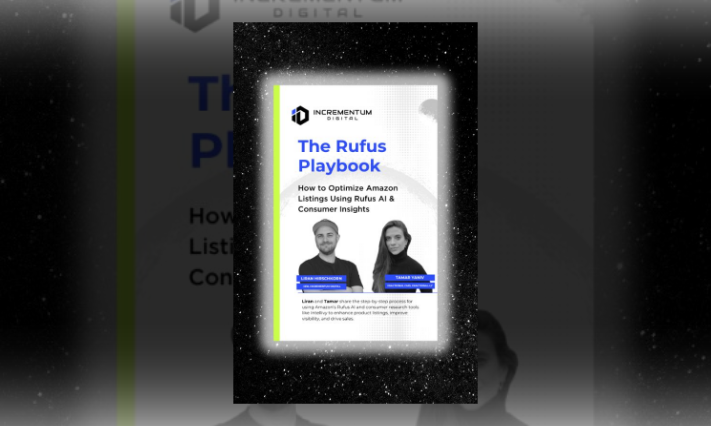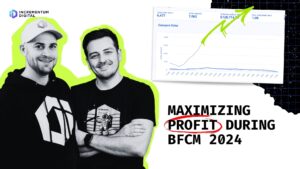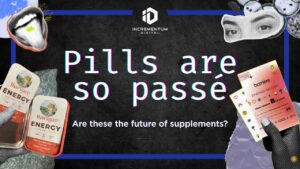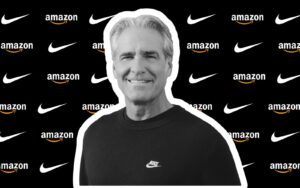Performance Growth
Successful Supplement Marketing Strategy Examples: Seed and Ritual

If you take supplements on the regular, you already know how brutally saturated this market is. Scroll Amazon for 90 seconds and you’re buried under a pile of greenwashed promises, pseudo-clinical buzzwords, and every overused wellness cliché imaginable. And yet, it’s not slowing down. The global dietary supplement market is now forecasted to hit $308 billion by 2028, growing at a steady 8.9% CAGR.
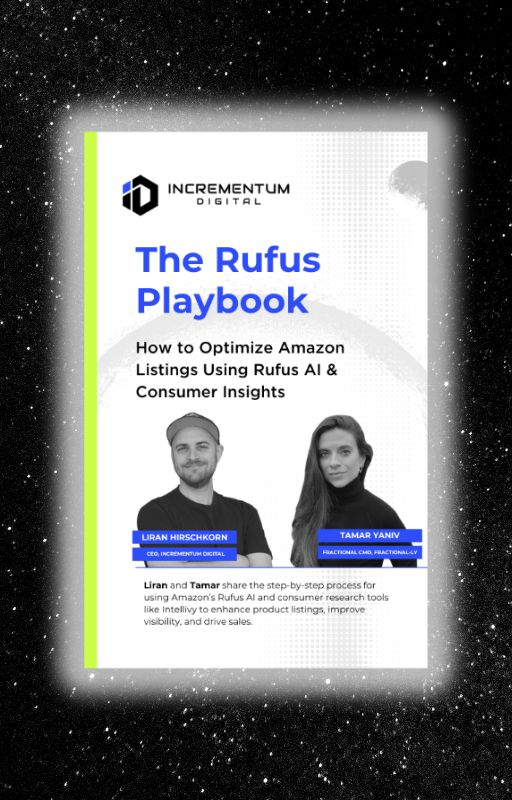
Learn How to Make Listings That Convert in 2025!
Read our step-by-step guide on how to optimize your listings using Rufus AI insights. Sign up for our newsletter and get your copy for free!
Show me howIn the U.S. alone, more than 50% of adults take supplements regularly, and the number of available products has ballooned to over 100,000. Sales of multivitamins, vitamin C, and vitamin D rose during the pandemic, particularly among consumers aged 18–35. Legacy players like GNC, Nature’s Bounty, and Centrum built their dominance over decades. But today’s category leaders didn’t win by sheer scale. They won by tightening the message, educating the market, and anchoring their value in trust and science.
To showcase just how great their products are, Seed and Ritual employed sharp marketing strategies. Today, we’re sharing these tactics that enabled them to break through one of the most crowded markets in the world:
Seed: Building a Brand on Science, Not Hype
SEED is one of the few profitable biotech startups in the U.S., with projected revenues of $200 million in 2024 and a valuation north of $1 billion. That success didn’t come from hype; it came from strategy.
The brand positioned itself as a science-backed, premium gut health company, not a lifestyle wellness brand in disguise. Its audience: informed, skeptical consumers who demand clinical validation over influencer fluff. SEED’s edge lies in its commitment to scientific rigor, education, and full-spectrum transparency.
Let’s break down the key tactics that turned SEED’s credibility-first approach into a profitable, category-defining brand:
Tactic 1: Seed University to Filter for Authority, Not Popularity
Most supplement brands hand off discount codes to influencers and hope for conversions. SEED took the opposite approach.
They built Seed University, a 59-minute training program covering microbiome science, probiotic mechanisms, and FTC compliance. Influencers are required to pass an exam before they’re allowed to promote the product. This process screens out anyone unwilling or unable to communicate the product’s scientific foundation.
By integrating this program into their broader social media marketing strategy, SEED ensured that their messaging remained consistent, credible, and aligned with their brand values.
Outcome: SEED created a network of scientifically literate advocates who elevate the brand rather than dilute it.
Tactic 2: Influencer Marketing with Real KPIs
The influencer economy is full of brands paying for reach they can’t track. SEED refused to waste budget on vanity metrics.
They set strict Cost Per Acquisition (CPA) targets and continuously evaluated influencer performance based on real revenue contribution. Partners who didn’t meet benchmarks were cut; top performers were scaled.
Outcome: Influencer spend turned into a reliable acquisition engine, not a branding gamble.
@naraazizasmith learned how important a healthy gut is when it comes to skin health and eczema! I take @Seed to support my gut health. you can use my code NARA25 for 25% off your first month of Seed #seedprobiotics #probiotics #guthealth
Tactic 3: Transparent Messaging Rooted in Clinical Science
Probiotics are notorious for wild claims and low consumer trust. SEED addressed this head-on with transparent, data-driven messaging.
Every product claim is backed by peer-reviewed research. Instead of oversimplifying the science, SEED educates consumers through long-form blog content, podcast interviews, and detailed explainer articles.
For example, the DS-01 Daily Synbiotic contains 24 clinically studied strains and delivers 56.3 billion AFUs (a more precise measure than CFUs) per dose. The brand highlights its ViaCap® technology, which ensures probiotics survive stomach acid to reach the colon, where they’re most effective.
These results are shared openly through Seed’s site, Fullscript portal, and clinician-facing content.
Outcome: SEED built trust with consumers who actively question supplement efficacy.
Tactic 4: Minimalist, Sustainable Packaging as Brand Signal
The supplement aisle is full of loud, generic packaging. SEED used design to signal substance.
Their product comes in a refillable dark glass container, shipped with biodegradable refill packs and a travel vial. This minimalist, eco-friendly design reinforces their premium position while appealing to environmentally conscious buyers.
Outcome: Packaging becomes more than aesthetic: it’s proof of the brand’s values.
What Sets SEED Apart
While most brands chase volume or aesthetics, SEED built authority through science, education, and performance.
Influencer partnerships were tightly controlled. Every ambassador completed Seed University to ensure accurate, compliant messaging. Campaigns were held to strict CPA benchmarks, optimizing for conversions, not just reach.
The product stood up to scrutiny. They present clinical research to show how their products measurably improve gut health, immune balance, skin clarity, and lipid markers. This data is featured across Seed’s site, practitioner portal, and Fullscript.
SEED positions itself at the premium end of the market, and earns it. The value comes from transparent formulation, clinically supported results, and a brand built to resonate with informed, skeptical buyers.
Ritual: Building Trust Through Radical Transparency
With over $250 million in retail sales in 2024, more than 2 million customers, and 25 million bottles sold since launch, Ritual has moved from startup to category leader in less than a decade.
But this growth didn’t come from trend-chasing or aggressive SKU expansion. Ritual built its brand by doing what most supplement companies won’t: showing the receipts. From full ingredient traceability to clinical testing of final formulations, Ritual turned transparency into a growth engine and reshaped what consumers expect from a wellness brand. Here’s how they did it:
Tactic 1: Radical Ingredient Transparency
The supplement aisle is full of vague labels, hidden “proprietary blends,” and ingredients no one can identify. That’s exactly the trust gap Ritual set out to close.
Every product page includes detailed sourcing for each ingredient: where it comes from, who supplies it, and what it does. Ritual also publishes third-party testing results and certifications, covering everything from non-GMO status to allergen safety and vegan compliance.
Unlike most brands, Ritual avoids proprietary blends altogether. Every formula is fully disclosed, down to the dose and origin of each component. Ingredient traceability is the foundation of how they communicate value.
Result: Transparency became more than a feature. It’s the reason consumers trust the brand and stick with it long-term.
@ritual This past week Ritual and our founder, Kat were featured on @cnbc! Thanks to the team for sharing that as Ritual grows, our mission continues to grow, too. The future of health is clear, and we’re proud to be setting a new standard for the supplement industry. Click the link in our bio to check out the full video✌️ #womenshealth #wellnesstok #ttc #pregnancytiktok #pregnanttiktok #prenatal
Tactic 2: Clean, Minimalist Branding
Ritual’s visual design choices were intentional and aligned with the brand’s positioning around transparency. The clear bottles and capsules are not just aesthetic; they reflect the company’s stated commitment to ingredient visibility and honesty. The packaging features minimal text, modern typography, and avoids the exaggerated claims commonly seen in the supplement category.
According to founder Katerina Schneider, the design is meant to serve as a metaphor for the brand’s ethos: providing clarity in a space often marked by confusion. The slogan, “The future of vitamins is clear,” underscores this idea. These design choices weren’t made in isolation; they were part of broader marketing strategies that prioritized trust, education, and visual consistency. The branding strategy also includes educational components, such as publishing ingredient sources and linking to supporting studies on Ritual’s website.
Result: The packaging reinforces the brand’s promise of transparency and simplicity, helping Ritual stand out in a category where visual noise and vague claims are the norm.
For more ideas on how visual identity drives growth, check out our packaging redesign breakdown featuring Heinz, Justin’s, and RxBar.
Tactic 3: Science-First Product Development
While many supplement brands prioritize speed to market, Ritual took a research-led approach to formulation. The company worked with a team of medical advisors and scientific experts to determine which nutrients were essential, how they should be dosed, and which life stages they should target.
Clinical validation was a key part of this process. Ritual has conducted four clinical trials on its final formulations (not just individual ingredients) and committed $5 million toward additional studies by 2030. These trials include products like Essential for Women, and results are made available to the public, adding another layer of transparency.
Rather than offering one-size-fits-all solutions, Ritual structured its product line to address specific phases of life such as pregnancy, postnatal recovery, and menopause. This segmentation adds relevance and precision to their offerings.
Result: This science-first strategy positioned Ritual as more than just a clean-label brand. It helped establish the company’s credibility in a market often criticized for lack of evidence and clinical rigor.
What Sets Ritual Apart
Ritual built a system of trust. By exposing every part of the supply chain and backing claims with real science, it gave consumers a reason to switch and stay. With a clean aesthetic, intelligent messaging, and a transparent value proposition, Ritual turned skepticism into loyalty.
Key Takeaways for Supplement and CPG Brands
- Prioritize education over hype. Clear, accurate communication backed by science earns trust and builds long-term loyalty.
- Choose aligned influencers, not just large followings. Partners should reflect your brand’s values and be equipped to speak credibly about your product.
- Treat packaging as a credibility tool. Design, labeling, and materials should reinforce quality and transparency, not distract from them.
Growth Readiness Checklist for Brand Clarity & Momentum
This checklist helps you assess whether your foundation is built for that kind of growth. Inspired by what made Seed and Ritual stand out, these prompts are designed to spark strategic thinking. Use them to identify what’s working, what’s missing, and what needs sharpening:
Positioning & Product Strategy
-
- Is our brand clearly differentiated beyond generic wellness claims?
- Do we serve a defined audience with a focused product line?
- Are our product claims backed by research or clinical rationale?
- Have we clearly articulated the “why” behind our brand and product?
Transparency & Trust
-
- Do we disclose full ingredient lists, including sourcing and supplier details?
- Are any of our products tested in their final formulation (not just individual ingredients)?
- Have we earned third-party certifications (e.g., NSF, vegan, non-GMO)?
- Is all of this information visible and digestible on our website and packaging?
Influencer & Partner Strategy
-
- Do we train or brief influencers on scientific/product accuracy before campaigns?
- Do we track influencer performance with real KPIs (e.g., CPA, retention)?
- Are our ambassadors chosen for alignment with brand values, not just audience size?
Content & Communication
-
- Are we using content to educate, not just sell?
- Do we simplify complex topics without watering down the science?
- Are studies, sources, or experts cited in our marketing?
- Is our messaging consistent across our website, email, packaging, and social?
Packaging & Brand Signals
-
- Does our packaging reflect our product quality and values?
- Are we using design and copy to signal transparency and credibility?
- Have we eliminated visual clutter and exaggerated claims?
Build the Brand Your Market Actually Trusts
Seed and Ritual didn’t rely on trends, gimmicks, or SKU overload. They built disciplined, credibility-first brands in one of the most crowded, skeptical categories in commerce. Their success isn’t magic; it’s strategy. And it’s replicable.
If you’re scaling a supplement or CPG brand and know you could be doing more with your messaging, packaging, or influencer strategy, now’s the time to act. The brands winning today are the ones that communicate clearly, educate consistently, and earn trust from day one.
Want a clearer path to growth? Let us show you what’s working and what’s holding you back.
Book a free Amazon Brand Audit today and get tailored insights into your performance, positioning, and opportunity areas. No fluff. Just a clear next move.
LET’S DISCOVER WHAT’S POSSIBLE FOR YOUR BRAND
We’re here to listen and uncover opportunities tailored to your unique goals.
Fill out the form to get started, and you’ll walk away with real insights and actionable recommendations—whether we work together or not.
- HANDS-ON LEADERSHIP
- AWARD-WINNING PARTNERSHIPS
- CUSTOM-BUILT SOLUTIONS
